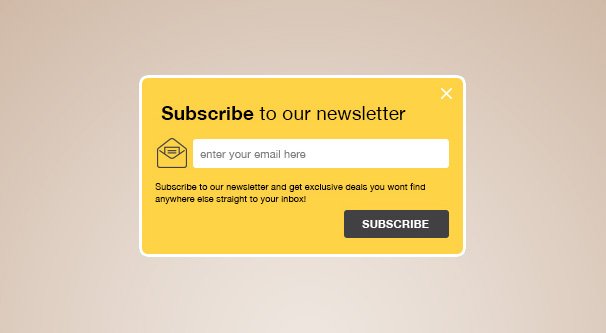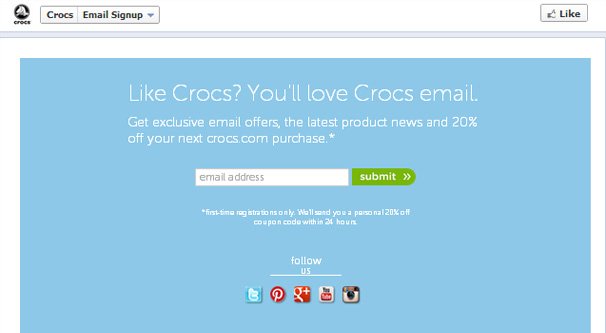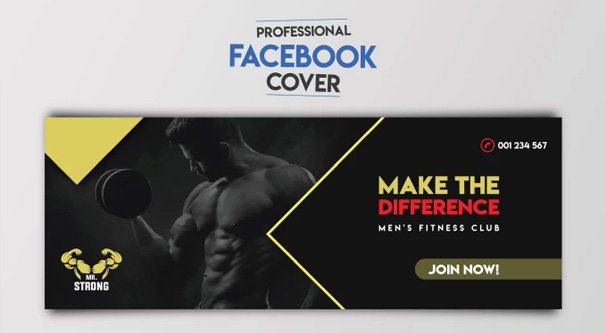 Written by ContentPowered.com
Written by ContentPowered.com
I talk a lot about social media marketing and other channels on this site, but one thing I feel like I don’t emphasize quite often enough is the need for your own marketing channels.
It seems like a Facebook profile is “yours”, a Twitter profile is “yours”, and so on. The reality, though, is that they very much are not. Anyone who has ever had to deal with review bombing, mass reports, or rules violations knows quite well that when you don’t own a marketing channel, it should be treated as transient.
Think about it this way: if you have a business that relies on an active Facebook page, what happens if that Facebook page is banned? It doesn’t matter if it’s a legitimate ban or a side effect of massed false reports; your business suffers while you struggle to get your page reinstated, if you can get it back at all.
The same goes for pretty much every channel out there. Facebook, Twitter, and other social networks can ban you at the drop of a hat, and unless you’re Coke or Nike or Walmart, nothing you say can possibly get them to change their minds. You don’t have that kind of influence.
It’s not just social networks, either. Ad networks, like Google Ads, can ban you for any number of violations. For that matter, even your web host can cancel your contract at any time, though you generally have an easier time restoring a website on a new host than you do getting a social media profile reinstated.
Your website is one of your most stable marketing channels, and you own it entirely. The only way it can be cancelled out from under you is if you’re violating the policies or terms of the web host, like hosting malware, operating as a hub for stolen files, or other kinds of malicious activity.
Sheer cancellation isn’t what you have to worry about all the time, though. Facebook and Google both run primarily on algorithms, and those algorithms change all the time. Older marketers remember the days surrounding things like the Google Panda update, which destroyed entire business models and left thousands upon thousands of sites struggling to get even a single visitor. A site like Facebook can just tweak a few values in their algorithm and your livelihood disappears.
In the constant quest for stable marketing channels, one you may recognize right away is the email list. An email list is the most stable channel you have. No one can “cancel” your list. Your list is your list, and as long as you’re actively building it to account for turnover and list decay, you’re good to go.
An email marketing list is an independent marketing channel, but you can use other channels – like your website, your blog, and your Facebook page – to gain new subscribers. As long as you have both channels, why not keep them feeding into each other?
That’s what this post is really about. I’m not here to lecture you about the need for a Facebook-Email relationship; I’m here to tell you some options you have for implementing it.
Five Methods for Earning More Email Sign-Ups
The meat of this article is aimed at helping you convert your Facebook fans – and the people who come across your account but who aren’t fans yet – into email subscribers. This helps you retain your audience. You can send them directly to posts you wouldn’t want to post on Facebook. You can send them links to new websites, new services, and new social media accounts they may be interested in. Essentially, you take your audience with you.
Email opt-ins are an important filter as well. We all know that Facebook often has issues with engagement and quality for your followers. Well, when you convert your best followers into an email newsletter, you may end up with a smaller audience, but that audience is more engaged.
I’ve put together a list of five different techniques you can use to convert those followers into subscribers, but there are plenty more methods out there. At the end, then, I’ll give you a handful of other resources to read further.
NOTE: Facebook has a redesign imminent, and no one knows just yet how things will change for businesses. Some of these techniques might not be effective once that redesign happens. We’ll see!
Method 1: Make Your Facebook Button a Sign Up Button
Every business page on Facebook is given a handful of buttons across the top of the page, along the bottom of their cover photo. A few of them are standard: the like button, the follow button, the share button, and the button with the […] for more options, all to the left of the page.
To the right might be the Send Message button, which allows anyone using Facebook to send your page a message via Messenger. This button only exists if your page is set up to handle messages, so not every page has it. That’s a whole other marketing channel, complete with AI-like bots to guide discussions, but that’s a story for another article.
To the left of the Send Message button is a slot you can customize for your page. This button is a customizable – within limits – call to action that can lead to a variety of different landing pages. Here are some examples.
- Moz, the SEO blog, has the Send Message button, as well as a Messenger pop-up when you first check their page. Their call to action button is Sign Up, and it leads to a landing page for Moz Pro, where you get an explainer video, a few value propositions, and the ability to start a 30-day free trial.
- Mailchimp, the email management platform, does not have a Messenger button. You can see that without the Messenger button, the call to action button takes up twice as much space. In this case, they have Use App, which leads to a landing page where you can get the Mailchimp mobile app.
- PC Gamer, the magazine, also does not have the Messenger button. Their call to action button is Shop Now, and it leads to a third party site that sells issues of their magazine in print and digital formats.
You can use this button to get people to subscribe to your mailing list. It’s quite easy.
Make sure you have Admin level control over your page, and navigate to your Facebook.com/PageName URL. Where the call to action button is, you will either see your existing button, or a button labeled “Add a Button.” Either way, click to edit it. This will pop up a box with various options. Under the Contact You category, you can find Contact Us, Sign Up, and Send Email, all of which can be valid for email list opt-ins. Choose the CTA you want and click Next.
Depending on the call to action you chose, you will be asked to pick a destination for your button. For this, you want the URL of your email sign-up landing page. Hopefully you have one. Simply choose website link, plug in your link, and save the button.
The beauty of this method is that you can rotate, split test, and change your landing page whenever you like, so long as you either implement a redirect or keep the same URL, without having to tweak anything on the Facebook side.
Method 2: “Sell” Value For a Sign-Up
Facebook long ago banned the practice of like-gating content, and modern marketing blogs seldom use social media gating anymore, but gating content behind a sign-up is still a valuable technique to implement.
For this, you need two things. First, you need a landing page for whatever, product, trial, service, discount, ebook, PDF, or other offer you want to promote. This is your lead magnet. It’s a piece of value that should be high quality and interesting enough that your followers want it.
Second, you need the gate. In order for someone to claim that offer, they need to sign up for your mailing list. Most email management platforms have a way to implement this, and there are plugins and other systems you can use to implement this “storefront.” Basically, you’re selling something, except instead of asking for money, you’re asking for contact information as payment. It’s surprisingly effective!
What does this have to do with Facebook? Well, you use Facebook to promote the content you’re selling. Maybe you write blog posts about a similar topic, promising more value behind the gate. Maybe you just promote the book or whatever raw through your posts. The choice is yours.
Method 3: Use Your Cover Photo as a Billboard
Your Facebook cover photo is a large piece of digital real estate that your fans see whenever they visit your page. It’s a huge image that you can format to present whatever kind of offer you want. Treat it like a billboard, a form of passive advertising, and you can get a surprising number of new sign-ups.
There are a few ways you can go about doing this. The first is just to promote your mailing list raw. Create a compelling banner with text like “Keep up to date on our content by registering at url.com” with your opt-in landing page link, or a shortlink to it.
You can also fill out the caption for your cover photo with a call to action. When users click your cover image, it opens up in a lightbox just like every other image post on Facebook. That means it comes with space for a description, where you can deliver a pitch, a call to action, and a link.
For a more graphical attraction, you can combine method 3 with method 2 above and offer something like an ebook or a trial of your service to people who click through that link and sign up.
Method 4: Run a Contest
I know, this is kind of a low bar, but it’s still a very effective option for those of you who want to get a bunch of email opt-ins, new follows, and other social media engagement for a relatively low barrier to entry.
All you really need is a prize people want. I always recommend something like a free month of service, or a free product, something like that. You have to be careful with options like “a free Galaxy S10” or whatever the latest and greatest piece of tech is. The problem there is that you get a ton of people signing up who just want the phone, and who will never open one of your marketing emails.
Once you have a prize, all you need to do is register with a service like Gleam. I like Gleam for three reasons. First, it’s a slick interface that works with pretty much every channel, from blog embeds to Facebook posts to Tweets and beyond. Second, it handles all of the annoying back-end work of running a contest without you needing to do much more than think about the entry requirements.
Third and most importantly, it’s a common and popular app and it saves user information. That dramatically reduces the barrier to entry when a user just has to click a button and all of the relevant actions are taken for them.
Method 5: Run Ads
If you don’t mind spending some money for new sign-ups, Facebook ads can be a great way to do it.
First, export your existing mailing list and filter it to maximum engagement. Then import it into Facebook as a custom audience. Create a lookalike audience that mimics that audience, and run lead generation ads at that new audience. Sure, ads are a big topic, but that’s fine. There’s plenty of writing on the topic available.
Additional Resources
If you wanted more than just these five ideas, here are some other posts you can read for some more.
- Five Smarty-Pants Ways to Collect Emails from Facebook Fans by PostPlanner
- 18 Smart Ways to Grow Your Email List with Facebook in 2019 by MailMunch
- How to Build up Your Email Subscriber List on Facebook by CampaignMonitor
Do you have a favorite, effective strategy? Let us know in the comments.







